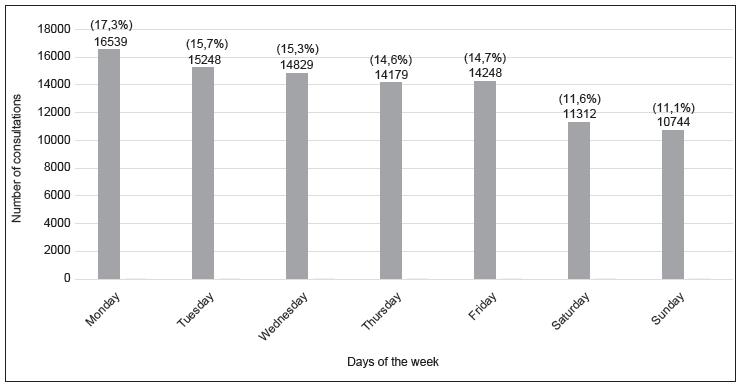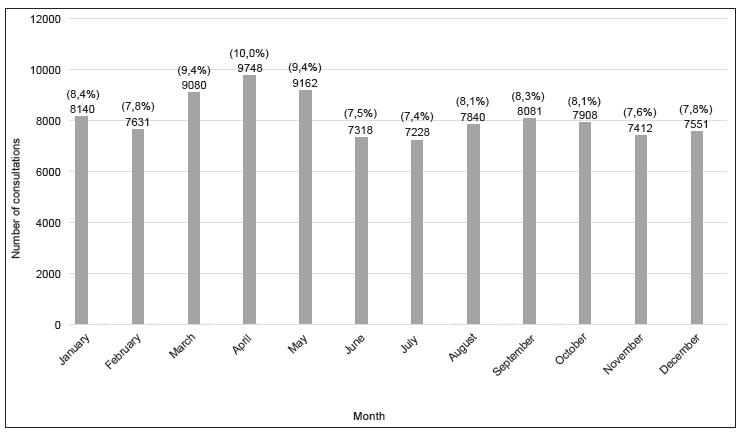ABSTRACT
Objective:
to check the association of the proposed priorities of the institutional protocol of risk classification with the outcomes and evaluate the profile of the care provided in an emergency unit.
Method:
observational epidemiological study based on data from the computerized files of a Reference Emergency Unit. Care provided to adults was evaluated regarding risk classification and outcomes (death, hospitalization and hospital discharge) based on the information recorded in the emergency bulletin.
Results:
the mean age of the 97,099 registered patients was 43.4 years; 81.5% cases were spontaneous demand; 41.2% had been classified as green, 15.3% yellow, 3.7% blue, 3% red and 36.and 9% had not received a classification; 90.2% of the patients had been discharged, 9.4% hospitalized and 0.4% had died. Among patients who were discharged, 14.7% had been classified as yellow or red, 13.6% green or blue, and 1.8% as blue or green.
Conclusion:
the protocol of risk classification showed good sensitivity to predict serious situations that can progress to death or hospitalization.
Descriptors:
Descriptors: Emergency Nursing; Emergency Medical Services; Emergency Identification; Triage; Protocols; Nursing


